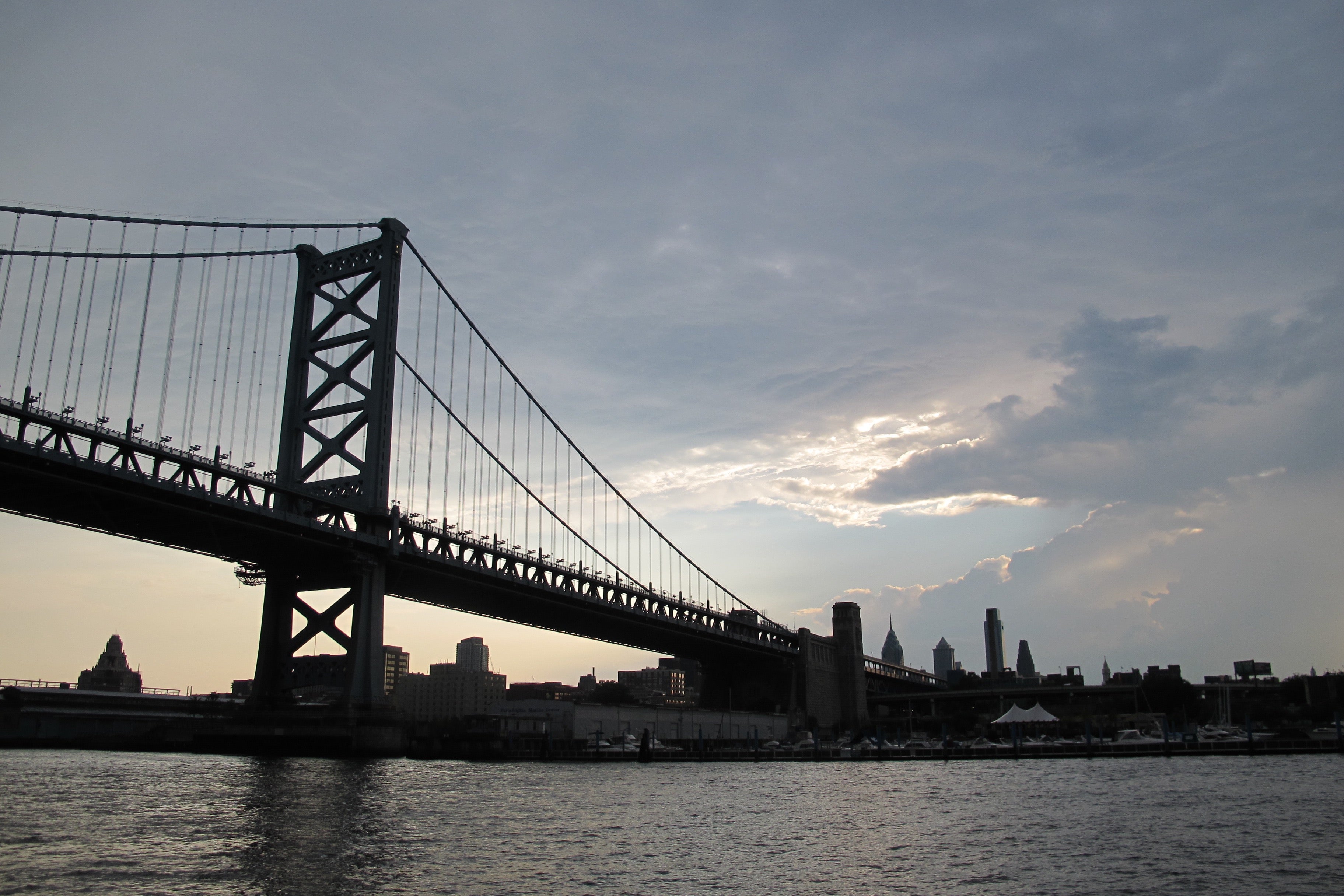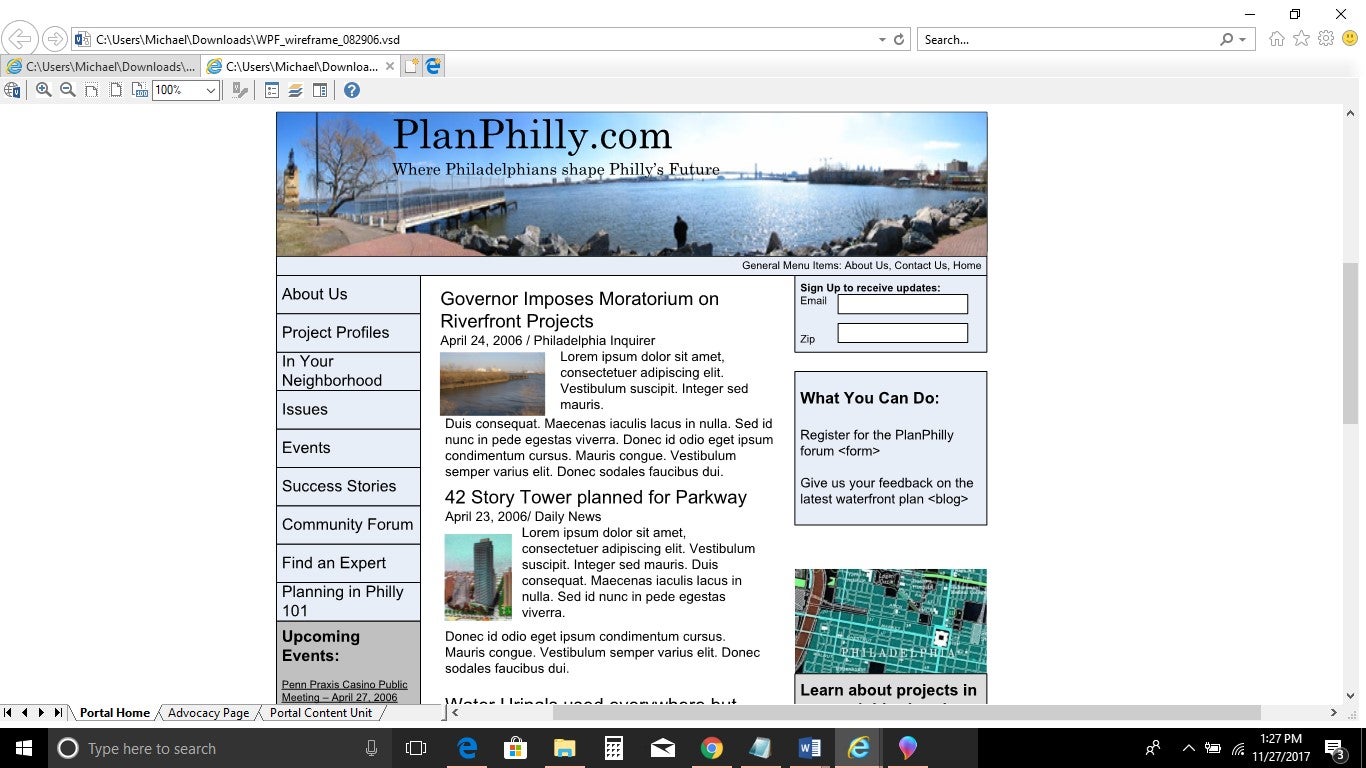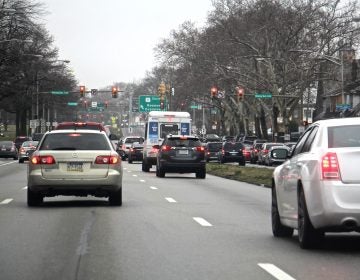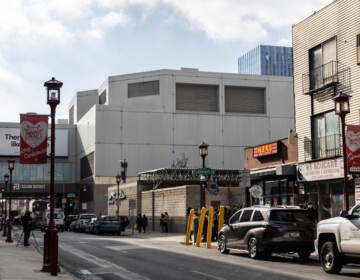Not built in a day: One of PlanPhilly’s creators reflects on a decade of dedicated built-environment coverage

Michael Greenle facilitated the process that created PlanPhilly in 2006, shaped its outreach strategy at PennPraxis, stewarded its move from Penn to WHYY, and is a member of PlanPhilly’s Advisory Board. As we continue our year-end membership drive, Greenle reflects on PlanPhilly’s creation and growth over the years.
PlanPhilly has been an incredible resource for Philadelphia since 2006, serving as public watchdog, documentarian and community organizer for those who care about the city’s built environment and dream about its future as a well-designed, equitable and vibrant city.
It might surprise some readers to learn that PlanPhilly did not begin as a news outlet. It started as an effort by the William Penn Foundation and TechImpact (then called NPower) to use the internet to help their grantees collaborate. The need for a platform focused on city planning and design issues sprang from a process including the University of Pennsylvania’s PennPraxis, the Design Advocacy Group (DAG), SCRUB (now Scenic Philadelphia), the Preservation Alliance of Greater Philadelphia, Pennsylvania Environmental Council, the Community Design Collaborative and others expressing an interest in promoting and amplify their work to a larger audience in a news landscape that didn’t cover design and planning deeply. This process envisioned as a collaborative portal where organizations would create and share information, and break their own news using freelance journalists (albeit sparingly) to contribute features using a modest budget.
Newcomers to the city might doubt it, but the local political landscape was far more cynical and pessimistic back then than it is today. Philadelphia had not yet begun to show its modest population growth and the mantra of many decision-makers was “any development is good development,” much to the chagrin of city planners, preservationists and those who cared about design. The Planning Commission and Zoning Board of Adjustment were derided for lacking professional planning expertise and allowing developers to drive decision making. Developers regularly proposed projects that prioritized parking and scoffed at pedestrian-friendly amenities, public access and ground floor activity. Those of us who believed in replicating best parts of Philadelphia — the sections with the most granular activity, interest and charm — were left regularly disappointed and beset with a sense that we were of incrementally losing grip of what made Philadelphia special.

The idea behind PlanPhilly was simple: Create a hub for information that made residents in their city, show them how decisions were made, teach how they could personally have an impact, and then inspire them to engage. The intention was to build a community of Philadelphians who loved the city and cared about its future (“people who gave a s***” was our shorthand) via a database and communications tools to keep them informed and engaged. Advocacy groups like DAG and the Preservation Alliance would then have a swelling constituency to draw from and could become more formidable advocates for a better built environment.
The process began with interviews of the Foundation’s grantees, producing a series of conversations that would begin with lamentations of what’s wrong with Philadelphia but inevitably yield to an accounting of Philadelphia’s assets, potential and the need to shake awake the civic pride for Philadelphia’s built environment.
I am reminded of one interview where a source recounted the story of a new-to-the-city power-broker who asked, “where the room was,” in Philly — meaning where the decisions were made. The response was that there wasn’t a room — there were dozens of them. In Philadelphia, pluralistic by design, fiefdoms trumped fiat, and trying to stamp out corrupting influence was a wack-a-mole exercise in futility. Could the underdog-ism that permeated Philadelphians’ collective psych and spurred its passion for its sports teams and returning slights be harnessed to think that we deserve more from our leaders: better waterfronts, intact city fabric with layers of history, and truly public spaces?
We got our chance when Harris Steinberg of PennPraxis agreed to host the nascent platform, helping to shape it and naming it the intentionally active Plan-Philly. Steinberg was also about to take on the impossible: Creating a citizen-driven plan for the city’s Central Delaware Waterfront, where the city’s colonial and industrial past met the urban nihilism of highways and desolate blight, all while navigating the murky waters of the city’s planning, development and zoning processes. With the prospect of two casinos and speculative towers in search of entitlement, neighborhood residents were wary and had little reason to trust the process. What followed was a campaign-like design process to raise expectations and allow space for waterfront residents to dream aloud about what they thought access to the water and connections to it might mean to their communities. The PennPraxis-led process gave them a platform to create a lofty vision that has been a launching pad for multiple rounds of development, building toward a natural, green waterfront with an urbane public realm connected seamlessly to its increasingly vibrant neighborhoods just blocks away.
I am confident there wouldn’t be a strong sustained vision for the waterfront without PlanPhilly. At every turn throughout the vision planning, Steinberg said the process would be open and transparent, and PlanPhilly made that promise a reality. The real-time news and video PlanPhilly provided was, together with the city’s editorial pages, what Steinberg called “a civic force-field” to protect the process from corruption or manipulation by special interests. Matt Golas, who came on board as the initial site launched, provided the experienced editorial hand that lent PlanPhilly the credibility necessary to become trusted as the official record of the waterfront planning process. For a modest website producing project-based journalism, Golas was like bringing a bazooka to a knife-fight, and made it possible to hire professional journalists like Kellie Patrick Gates, Matt Blanchard and Alan Jaffe to focus and expand PlanPhilly’s coverage.
Soon enough, PlanPhilly became a “must-read” in City Hall and among civic leaders, and its name started cropping up in the newspapers and official city proceedings. Its reporters built expertise and institutional memory that rivaled the city’s best professionals and produced a public record that was invaluable to anyone trying to make a case for a better built environment.
PlanPhilly received additional support from William Penn Foundation, followed by that of the Knight Foundation, the Thomas Skelton Harrison Foundation, and the Wyncote Foundation. Throughout its history, PlanPhilly has relied on the enlightened philanthropy of these foundations and its dedicated readers.
Timing was everything, and PlanPhilly was born into the right moment of civic urgency and yearning for hope. It was thrilling to see PlanPhilly reporters, armed with pen and camera, prompting a subtle, but perceptible, change in tone in the city’s regular planning and zoning meetings, which were then largely undercovered and never recorded. Public hearings were suddenly actually public, and officials thought twice (which was more than two times the amount previously in some cases) about the way they treated Philadelphia knowing that someone was watching.
Philadelphia has become a more optimistic place for development in the ten-plus years of PlanPhilly’s existence. Even those developers who loved parking and scoffed at including pedestrian-friendly amenities, have changed their tune: Builders are now cutting blocks up with streets and lining their properties with retail, and I don’t think it’s coincidence that with better information that we’ve raised expectations and are now seeing better development proposals. This is a trend we must perpetuate: Just think of the deadening blank walls, underleveraged transit stops and missed opportunities at reuse we can avoid by watching more closely and saying we want more.
Let’s put PlanPhilly in the room, and as many rooms as we can over the next year: Support PlanPhilly by donating to WHYY, which has been PlanPhilly’s wonderfully supportive home since 2015. Donations using the link above will be credited directly to supporting PlanPhilly’s thoughtful journalism. And after you’re done that, help fulfill PlanPhilly’s original mission by supporting the other urbanist groups who are raising the bar for Philadelphia to be the best city it can be. Let’s look back in another decade and be glad we had even higher expectations and the news, information, and will to make them a reality.
WHYY is your source for fact-based, in-depth journalism and information. As a nonprofit organization, we rely on financial support from readers like you. Please give today.







